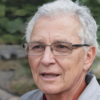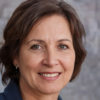2010 Esthursian general election: Difference between revisions
No edit summary |
No edit summary |
||
| Line 102: | Line 102: | ||
}} | }} | ||
The 2010 Esthursian general election was held on 4 April, 2010, as per the Constitutional term limits in [[Esthursia]]. This election resulted in the third consecutive [[Conservative Union (Esthursia)|Conservative]] government being elected, however economic stagnation (which was the culminate in [[Black Tuesday (Esthursia)|the 2010-11 financial crisis]] just months later), one-nation fears over the new more right-wing Conservative Prime Minister [[Tharbjorn Einarsson]], and the personal popularity of new Social Democrat leader [[John Largan]] all contributed to the closest election in a decade as well as the Conservatives having to seek a coalition with the Agrarian Democrats. As Einarsson and the Conservatives at large had mostly expected a 2002-style landslide as enjoyed by his predecessor [[Isaac Harding]], the verdict heavily dented his popularity. | The 2010 Esthursian general election was held on 4 April, 2010, as per the Constitutional term limits in [[Esthursia]]. This election resulted in the third consecutive [[Conservative Union (Esthursia)|Conservative]] government being elected, however economic stagnation (which was the culminate in [[Black Tuesday (Esthursia)|the 2010-11 financial crisis]] just months later), one-nation fears over the new more right-wing Conservative Prime Minister [[Tharbjorn Einarsson]], and the personal popularity of new Social Democrat leader [[John Largan]] all contributed to the closest election in a decade as well as the Conservatives having to seek a coalition with the Agrarian Democrats. As Einarsson and the Conservatives at large had mostly expected a 2002-style landslide as enjoyed by his predecessor [[Isaac Harding]], the verdict heavily dented his popularity. The centrist [[Middle Group (Esthursia)|Middle Group]] also suffered the loss of most of their seats, having previously been the third largest party, with several other third parties making considerable inroads as a result. | ||
This was the latest general election not to elect a Social Democrat government, as of February 2022, as well as the highest Conservative vote for over a decade. Einarsson remained as Prime Minister following the election, however a mix of perceived underperformance and disillusionment in the political centreground led to his approval figures never recovering to pre-election figures. Largan also enjoyed an increased share of seats and became the first leader since the early 1990s to be more popular than the party at large. | This was the latest general election not to elect a Social Democrat government, as of February 2022, as well as the highest Conservative vote for over a decade. Einarsson remained as Prime Minister following the election, however a mix of perceived underperformance and disillusionment in the political centreground led to his approval figures never recovering to pre-election figures. Largan also enjoyed an increased share of seats and became the first leader since the early 1990s to be more popular than the party at large. | ||
Revision as of 16:31, 11 February 2022
| |||||||||||||||||||||||||||||||||||||||||||||||||||||||||||||||||||||||||||||
851 in the House of Ministers; 401 in the House of Barons | |||||||||||||||||||||||||||||||||||||||||||||||||||||||||||||||||||||||||||||
|---|---|---|---|---|---|---|---|---|---|---|---|---|---|---|---|---|---|---|---|---|---|---|---|---|---|---|---|---|---|---|---|---|---|---|---|---|---|---|---|---|---|---|---|---|---|---|---|---|---|---|---|---|---|---|---|---|---|---|---|---|---|---|---|---|---|---|---|---|---|---|---|---|---|---|---|---|---|
| Turnout | 72.2% | ||||||||||||||||||||||||||||||||||||||||||||||||||||||||||||||||||||||||||||
| |||||||||||||||||||||||||||||||||||||||||||||||||||||||||||||||||||||||||||||
| |||||||||||||||||||||||||||||||||||||||||||||||||||||||||||||||||||||||||||||
The 2010 Esthursian general election was held on 4 April, 2010, as per the Constitutional term limits in Esthursia. This election resulted in the third consecutive Conservative government being elected, however economic stagnation (which was the culminate in the 2010-11 financial crisis just months later), one-nation fears over the new more right-wing Conservative Prime Minister Tharbjorn Einarsson, and the personal popularity of new Social Democrat leader John Largan all contributed to the closest election in a decade as well as the Conservatives having to seek a coalition with the Agrarian Democrats. As Einarsson and the Conservatives at large had mostly expected a 2002-style landslide as enjoyed by his predecessor Isaac Harding, the verdict heavily dented his popularity. The centrist Middle Group also suffered the loss of most of their seats, having previously been the third largest party, with several other third parties making considerable inroads as a result.
This was the latest general election not to elect a Social Democrat government, as of February 2022, as well as the highest Conservative vote for over a decade. Einarsson remained as Prime Minister following the election, however a mix of perceived underperformance and disillusionment in the political centreground led to his approval figures never recovering to pre-election figures. Largan also enjoyed an increased share of seats and became the first leader since the early 1990s to be more popular than the party at large.





